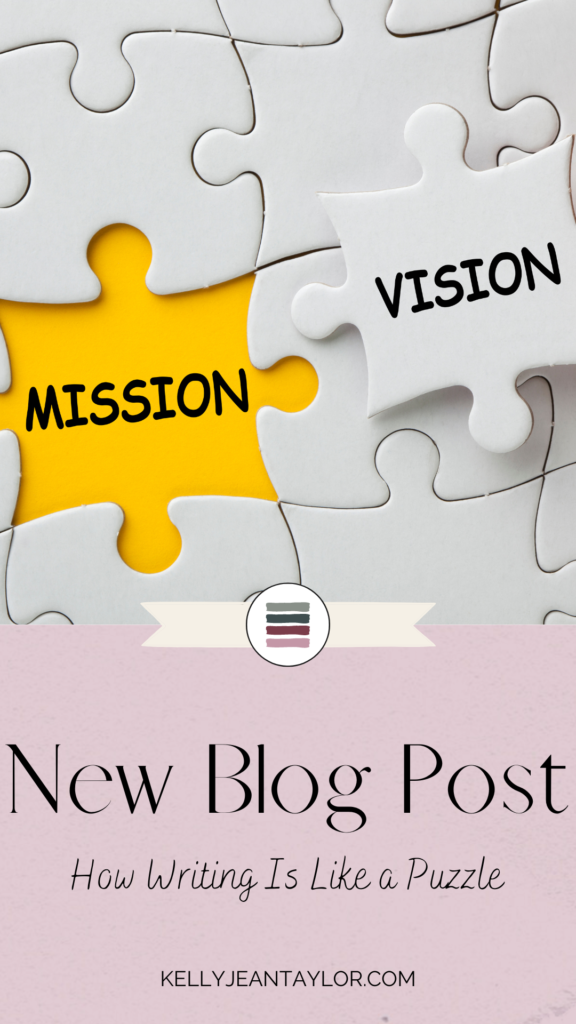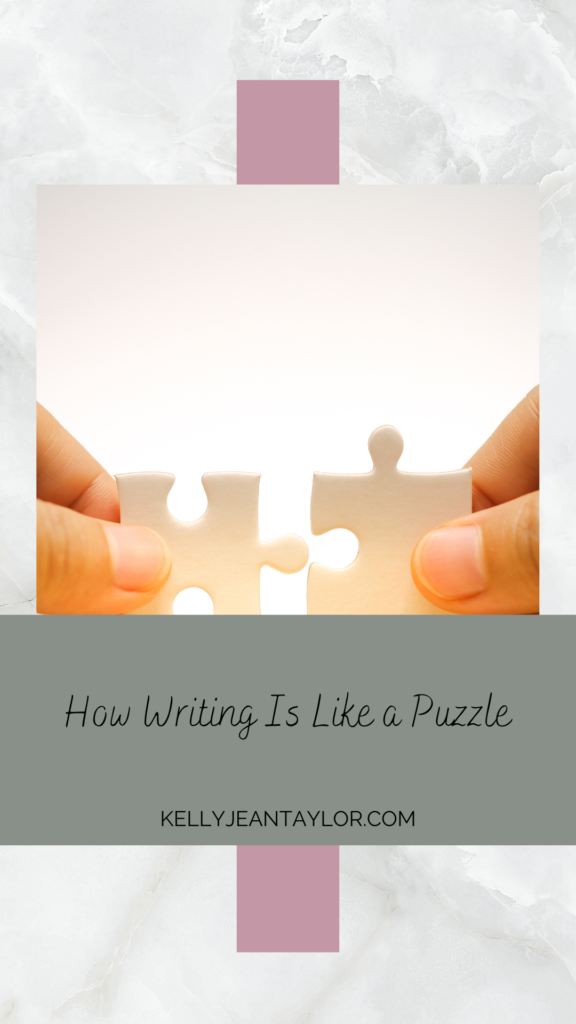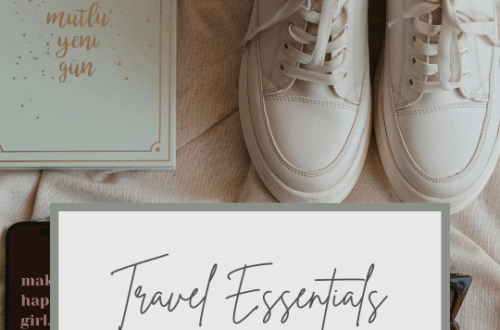
How Writing is Like a Puzzle
I received the best birthday gift from my husband last month and after putting pieces together I thought about how it relates to writing. Obviously, from the title you would guess what it is my husband got me, but you’re probably thinking, “Really, Kelly? You couldn’t possibly be that excited over a puzzle.”
Well, I am about to prove you wrong. This wasn’t just any puzzle. It was a 1000 piece Sherlock Holmes and the Speckled Band – A mystery jigsaw puzzle. This was the best gift because for one, I love Sherlock Holmes. Two, not only was it a puzzle; it contained the story and required you to put the puzzle together in order to solve the mystery of the Speckled Band! The best part… the puzzle was not that of the image on the cover so we had absolutely no idea what the picture was. Of course we had some clue from the story, but no picture to go off of. Three of us, my sister, husband and I spent eight hours putting this puzzle together so we could solve the mystery! We had a blast!!
Now, why am I blabbering on about this puzzle and how much I enjoyed it? Well, as the title suggests, it got me thinking about how writing is like a puzzle. So, let’s get started.
So, how can writing be related to puzzles?
Buying and Opening the Puzzle:
In this case the puzzle was a gift, so even better! Anyway, this would represent that moment of awe inspired revelation that you found a new idea for your next great novel. That initial excitement and enthusiasm for the newest story growing in your mind. Now that you have it home you open it to find it neatly packaged, but in a mess of pieces. What to do next?
Preparing the Puzzle:
Now, if you are anything like me (and I know some of you are), you open the pack and the sorting begins! The what seems like endless searching for edge pieces while the rest are filtered back into the box for later. Those edge pieces are your guide, your starting point to the finished product. Much like writing a story, the outline or planning stage comes first. You construct the base or starting point for your puzzle or story to begin and then take off running.
Proceeding With the Inside Pieces:
Now, it’s time to dig in and start forming the puzzle with the inside pieces, but where to start? Do you organize the pieces by like object depictions or do you dive in looking for whatever fits along the edge where you are currently sitting? In this case since we originally began with four people, (my nephew ducked out to play video games before to long) we each took a side. Unfortunately, I took the side with really dark pieces and had a really hard time finding the right pieces, so I decided to look for all the pieces to an object in the top corner and was able to gain momentum. As you move through your story, you start with a flourish of excitement and enthusiasm for the new ideas brewing in your mind as you do a puzzle searching for those first few pieces that will start you on your journey to the finished product.
Ugh, Those Annoyingly Frustrating Pieces:
You gain momentum and for a while you cruise along finding piece after piece, but then you hit a snag an you get stuck working on a section that is all floral carpet and every piece you need looks the same! As with puzzles, you may hit a snag in your writing with a difficult scene, event or even chapter. You struggle to find the right pieces to keep your momentum going or the right action, words or story arc. You syphon through the rest of the pieces in search of the ones you need, but it is no use. Your brain is just to worn staring at this section of the puzzle and you need a break to you gather your thoughts.
New Perspective:
So, you decide to take a break, switch spots (to which your sister finds all the pieces I was struggling and frustrated with within a few minutes :/) or ask for advice from a trusted ally. Taking a break and coming back will give you the rest you need to return with a fresh mind, and a new perspective. You could also move onto another area of your story and work there, then come back when you are ready to tackle it again or ask for advice. You could post your situation on forums and discussion sites to get suggestions and thoughts from others. This is where, when you are finished with your manuscript, beta readers are immensely helpful.
Finishing the Puzzle:
After eight long hours of working to find the right pieces, switching spots and perspectives several times, we finally finished the puzzle! The accomplishment was a collective sigh of relief. The same goes for finishing that first, second, fifth, or twentieth novel, a sigh of relief and elation. It is finally done, finished and the puzzle was ready to be solved. Your manuscript ready for the editor or if you added your editor to the last phase of a new perspective, ready to publish! Now, on to the next puzzle… I mean story!
So, what do you think? Could a story be similar to a puzzle? Let’s here your thoughts. Comment below!






